Technical Debt in Software Development
Technical debt is a concept in software development that refers to the consequences of taking shortcuts or prioritizing speed over quality during the development process. Just like financial debt, technical debt needs to be repaid with interest. The concept was coined by Ward Cunningham in the early 1990s to highlight the trade-off between short-term gains and long-term consequences in software development. In this blog post, we will delve into the implications of technical debt in software development, the challenges associated with managing it, and the ways to change the outcome.
Types of Technical Debt
There are various types of technical debt that can accumulate during the software development process. These include:
- Design debt: This occurs when there is a lack of proper planning and design in the software development process. It leads to code that is difficult to understand, modify, and maintain.
- Code debt: This refers to poor coding practices, such as the use of duplicate code, lack of comments, and inadequate error handling. Code debt makes the software more prone to bugs and errors.
- Testing debt: Testing debt occurs when there is a lack of thorough testing during the development process. This can result in undetected bugs and issues that may surface later, causing delays and additional costs to fix.
- Documentation debt: Documentation debt is the result of inadequate or outdated documentation. It makes it difficult for developers to understand and work with the software, leading to inefficiencies and delays.
- Infrastructure debt: Infrastructure debt refers to outdated or inefficient hardware, software, or development tools. It hinders the development process and can lead to performance issues and security vulnerabilities.
The Implications of Technical Debt in Software Development
Technical debt can have significant implications for businesses and software development teams. Some of the key implications include:
- Increased maintenance costs: Technical debt accumulates over time and increases the cost of maintaining and enhancing the software. Developers spend more time fixing bugs, addressing performance issues, and making changes to the codebase.
- Reduced agility and innovation: Technical debt makes it difficult to introduce new features and functionalities in a timely manner. The software becomes less flexible and adaptable, hindering the organization’s ability to innovate and respond to market demands.
- Decreased quality and reliability: Technical debt often results in a lower quality software product. It can lead to more bugs, errors, and crashes, which can negatively impact user experience and customer satisfaction.
- Increased time to market: Technical debt slows down the development process, resulting in longer time to market. This can be detrimental in fast-paced industries where time is of the essence.
- Decreased developer morale: Working with a codebase riddled with technical debt can be demoralizing for developers. It can lead to frustration, burnout, and attrition, ultimately affecting the productivity and creativity of the development team.
Challenges of Managing Technical Debt
Managing technical debt is not without its challenges. Some of the key challenges include:
- Balancing short-term and long-term goals: The pressure to deliver software quickly often leads to the accumulation of technical debt. Balancing short-term goals, such as meeting deadlines, with long-term goals, such as maintaining code quality, can be challenging.
- Lack of visibility: Technical debt is often invisible to stakeholders who are primarily focused on the functionality and features of the software. This makes it difficult to allocate resources and prioritize debt repayment.
- Lack of understanding: Many stakeholders, including project managers and business executives, may not fully understand the implications of technical debt. This can result in underestimating the resources and efforts required to address it.
- Resistance to change: Addressing technical debt often requires changes to established processes, workflows, and priorities. This can be met with resistance from developers, who may be reluctant to invest time and effort in refactoring and debt repayment.
- Limited resources: Organizations may have limited resources, both in terms of budget and skilled developers, to address technical debt. This makes it challenging to allocate resources for debt repayment alongside ongoing development efforts.
Change the Outcome
While managing technical debt can be challenging, there are steps organizations can take to change the outcome. Some strategies include:
- Proper planning and design: Investing time and effort in proper planning and design can help prevent the accumulation of technical debt. By considering scalability, maintainability, and extensibility during the initial stages of development, organizations can reduce the likelihood of debt accumulation.
- Prioritize technical debt: Organizations should prioritize addressing technical debt alongside new development efforts. This requires allocating resources specifically for debt repayment and establishing a culture that values code quality and long-term sustainability.
- Refactoring and debt repayment: Regularly reviewing and refactoring code can help address technical debt. By identifying and addressing code smells, duplicate code, and other issues, developers can improve the quality and maintainability of the software.
- Continuous testing: Implementing a robust testing process can help identify and address issues early on, reducing the accumulation of testing debt. By incorporating automated testing and continuous integration practices, organizations can catch bugs and errors before they become major issues.
- Invest in developer skills and knowledge: Providing developers with the necessary training and resources to improve their skills and knowledge can help prevent the accumulation of technical debt. This includes staying updated with the latest best practices, tools, and technologies.
Conclusion:
Technical debt in software development can have serious implications for businesses and can be difficult to manage. By understanding the types of technical debt, the implications of taking shortcuts, and the challenges of managing it, organizations can make more informed decisions about their software development processes. By implementing proper planning and design, prioritizing technical debt, and taking advantage of case studies such as the one provided, organizations can mitigate the risks associated with technical debt and ensure a more sustainable software development process.







